AICC
Table of Contents
As you start creating effective, meaningful e-learning content, you’ve likely considered how to ensure your course materials are accessible, functional, and compatible. If you’ve come across the term “AICC-compatible” in your research, you may be wondering what is AICC, how does it apply to your content, and what do you need to know?
The term has a long and complex history that traces the evolution of the e-learning industry itself. Ultimately, the usability of your materials depends on the tools you choose for content creation. It also depends on the learning management system (LMS) you use to deliver it. Understanding AICC compliance means knowing how it will impact your decision-making when it comes to choosing content creation tools and an LMS that will work together with functional longevity.
In this post, you will learn the following:
- What is AICC?
- How is AICC relevant in today’s e-learning environment?
- What makes an LMS AICC-compliant?
- What makes learning material AICC-compliant?
With this knowledge, you’ll have the power to make decisions within your business that ensure course content functionality and compatibility.
What is AICC?
AICC is an acronym that stands for Aviation Industry Computer-based Training Committee. Don’t let the specificity of “aviation” confuse you, however. The standards set out by the AICC quickly grew beyond the boundaries of their initial industry to influence a wide range of fields. The aviation industry was an early pioneer in computer-based learning. Its experts led the way by identifying a need for e-learning standards and creating the foundation for multiple generations of the work to grow.
The AICC was formed in 1988 to address the increasing costs of multimedia training materials. Early on, the AICC’s work focused on materials that would be delivered via CD-ROM. But as technology changed, so did the format. Over time, the AICC shifted to an HTTP-based protocol and included a JavaScript API interface.
The work of this committee ultimately produced what is widely regarded as the first-ever set of e-learning standards. Importantly, these guidelines allowed content that met AICC standards to appear across multiple LMS platforms. This would help in reducing costs and increasing flexibility and accessibility. Once materials had inter-compatibility, their value increased along with their reach. Without a set of standards allowing this kind of shared function, we may not have had today’s e-learning environment!
In 2014, the AICC officially dissolved due to a decline in interested members, but the standards live on in many formats and serve as the basis for a host of online learning experiences, including many popular modern-day LMS platforms. This kind of cross-compatibility revolutionized e-learning and standardized the creation of positive experiences for learners and instructors alike.
How is AICC relevant in today’s e-learning environment?
So, what is AICC doing to shape modern learning? Since the AICC dissolved nearly a decade ago, it’s worth questioning whether AICC standards are still relevant to modern-day e-learning. The short answer is yes, AICC compliance still matters. The lack of participation in the AICC itself does not indicate a reduction in the standard’s usability or relevance. It is instead a testament to the technology’s solid foundation, its continued applicability, and its deep impact on the e-learning industry.
What is AICC compliance providing for compliant organizations? Here are some key benefits of complying with AICC standards:
Increased compatibility and interoperability: Many companies maintain older training materials built with AICC standards in mind. Interoperability should be a key factor when choosing an LMS platform to ensure the widest range of usable training materials, both old and new. Admins can immediately add materials that comply with AICC frameworks to these LMSs without the need for time-consuming “translation” to another set of standards.
- Less time, money, and effort: Investing in an LMS that is compatible with existing learning activities can save time, money, and frustration. When all materials and tools are built on the same framework, it eliminates the need to start from scratch every time an update is made to a training program, which happens often.
- An evolving framework: In addition, the AICC standards didn’t simply disappear with the dissolution of the committee. The AICC handed their work forward. They provided a learning technology framework that serves as a foundation for other, more recent e-learning standards, including the most popular ones in the industry.
Put simply, AICC standards remain a foundational core. Other standards may come and go with changing technological fads. However, AICC has withstood the test of time and remained a cornerstone in the e-learning industry.
Other e-learning standards
What is AICC being replaced or supplemented by? AICC is not the only set of e-learning standards that should guide a functional, up-to-date LMS. As a member of the e-learning industry, you should familiarize yourself with a variety of existing standards and any new standards as they arise. The most common and highly regarded sets of e-learning standards include SCORM, xAPI, and cmi5.
SCORM
SCORM stands for Sharable Content Object Reference Model. It is a set of technical specifications that aims to provide maximum inter-compatibility between course authoring tools and LMSs. SCORM courses track important data, including what portions of a particular course have a status of incomplete, complete, passed, or failed. While SCORM can produce high-quality, interactive learning experiences, it can also be challenging for new users. Although newer than AICC, it’s still a relatively old set of standards that lack some of the flexibility of more recent iterations.
xAPI (Tin Can)
xAPI (also known as the Tin Can API) is a more recent addition to e-learning standards. xAPI functions similarly to SCORM but can track more types of data by using statements in the xAPI syntax to increase flexibility and functionality. It has become especially important in a quickly evolving digital landscape where many users access e-learning platforms on smartphone and tablet apps. While xAPI brings more flexibility in data tracking, it doesn’t ensure efficient user design or course quality. Developers will need to meet those important metrics independently.
cmi5
An acronym for computer-managed instruction, cmi5 offers even more flexibility in tracking learners. It can even track sources external to the LMS, including other apps and social learning. In an age where learners may participate in e-learning on mobile devices, from their cars, and even offline, this kind of tracking flexibility has become invaluable. It provides a bridge between the Learning Record Store (LRS) and the LMS. As a result, new technologies can focus on providing a more efficient and user-friendly design.
What makes an LMS AICC-compliant?
In the face of rapid advancements and other emerging e-learning standards, AICC remains relevant primarily because of its tracking system and efficiency. Newer isn’t always better. Like when you buy the newest mobile phone on the market only to find out your charger, phone case, and other accessories are not compatible with it. AICC remains a steadfast set of standards that still play nicely with a wide range of modern LMSs. For an LMS to be AICC compliant, it must adhere to the AICC’s guidelines and specifications for content interoperability. Here are a few key points that an AICC-compliant LMS should have:
- Interoperability: The LMS should be able to communicate and operate seamlessly with other systems and software. It should be able to import and launch AICC-compliant courses produced by any authoring tool.
- HTTP-based AICC Communication Protocol (HACP): This protocol allows an LMS to communicate with AICC courses via HTTP, which is the standard web protocol.
- Data tracking: The LMS should be able to record and track learners’ progress, status, and scores for AICC-compliant courses. This information can then be used to generate reports for further analysis.
- Course Structure Format (CSF) files: An AICC-compliant LMS should be able to interpret and utilize CSF files, which describe the structure and contents of a course. This includes course description files which hold the overall structure of the course, and AU (Assignable Unit) files, which contain specific content or modules within a course.
- Content packaging and delivery: An AICC-compliant LMS should be able to handle content packages that adhere to AICC specifications. This includes how the content is packaged, delivered, and organized within the system.
In sum, an AICC-compliant LMS is designed to ensure that e-learning content is interchangeable, traceable, and universally compatible across different systems, providing a consistent and effective learning experience for users. The most efficient LMS platforms will, of course, have compatibility across multiple sets of standards, including SCORM, xAPI, and cmi5. Knowing you’ve chosen a flexible LMS provides you with the greatest access to content creation tools and experimentation in delivery for positive learning outcomes.
What makes learning material AICC-compliant?
Once you have chosen an AICC-compliant LMS, you may be wondering what you need to do to ensure the learning materials you create are also AICC-compliant. The good news is that a high-quality LMS will provide you with the tools to do so almost seamlessly.
What is AICC compliance all about on a practical level? If you want a more advanced understanding of the process, you can explore the variety of file structures associated with AICC compliance. These include .au, .crs, .cst, and .des files.
The best modern-day content authoring tools provide more usability so you’ll automatically find high interoperability with the learning materials you create as long as the LMS is designed to meet these standards.
Becoming familiar with e-learning standards
If you’re new to the e-learning industry, don’t let the discussion of technical specifications and AICC guidelines intimidate you. Instead, make sure you have a solid understanding of what is AICC to guide your own development. A basic understanding of these foundational elements will help you make the best choices in terms of a high-quality LMS and the best content authoring tools.
Your primary role is to create the best learning content possible focusing on the quizzes, webinars, and training content that will bring your learners the experiences they need. Choosing an LMS that is AICC compliant allows you to focus on how to create the most engaging content instead of how to publish and manage the training program altogether. AICC compliance is just one of many e-learning terms you can gain quick information on when you visit our glossary. This collection of relevant terms and articles will have you feeling confident and secure in your e-learning choices in no time.







